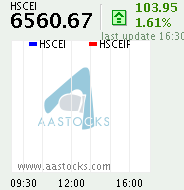Subprime Bubble Burst and Crisis Spreading
Subprime market lending is a general term that refers to the practice of making loans to borrowers who do not qualify for the prime financing terms from mainstream lenders (Prime Market) because their poor credit history. The failure to qualify for prime financing is due to low credit scores. Sub-prime lenders would offer a higher interest rate to those lower credit-score and the smaller down-payment clients to cover the greater risk and higher costs of sub-prime lending.
Subprime lending is risky for lenders and borrowers due to high interest rates, poor credit history and financial situations associated with subprime borrowers. Subprime lending may include a variety of credits including subprime housing mortgages, subprime car loans & subprime credit cards etc. The term "subprime" refers to the lower credit status of the borrowers.
The total size of subprime market mortgage loans in US is approximately about 1,300 billion US dollars of which nearly half of them had no proof of stable income. Although the loan interest rate may be charged higher by 1% to 2% as compared to the benchmark prime rate, it obviously tends to be more risky.
Beginning in late 2006, the US subprime mortgage trouble was brewing to a crisis. The subprime market entered to a meltdown. A sharp rise in the subprime mortgage foreclosures has caused many subprime mortgage lenders to fail or even file for bankruptcy, like the prominent New Century Financial Corporation which is one of the biggest subprime lenders in US. The failure of these companies has caused stock prices in the mortgage bundled securities market(valued about $6.5 trillion) to collapse. In turn, it further threatens the US housing market, its whole economy and even the oversea markets.
On August 15 2007, the subprime mortgage lending bubble burst in US with a tumble in stocks across Nasdaq and Dow-Jones and then affected all the stock markets worldwide as a result of the subprime concern.
The storm is still brewing ongoingly and yet spreading globally to other financial sectors. In order to avoid the collapse of the sub-prime market and the liquidity crunch, the US Federal Reserve has injected nearly 6 billion dolloars into the financial sector and lowered the discount rate by half percent from 6.25% to 5.75% unexpectedly on August 17 2007.
Anyway, I think its remedial impact is effective only in the short term. In the long run, the cure to the problem is lying on the fundamental change in the saving and consumption attitudes of the US people. However, subprime lending will still be developing. The related variety of products emerged in the past few years such as Adjustable Rate Mortgage(ARM), option ARMs, Interest Only Loan, Negative Amortization,Collateralized debt obligations (CDOs)....etc. The subprime lending is still highly controversial.
Note: Collateralized debt obligations (CDOs) are a type of asset-backed security and structured credit product. CDOs gain exposure to the credit of a portfolio of fixed income assets and divide the credit risk among different tranches. CDOs serve as an funding vehicle for portfolio investments in credit-risky fixed income assets.
Also written in Chinese by tcwong at http://wongtc.blogspot.com/











0 Comments:
發佈留言
<< Home